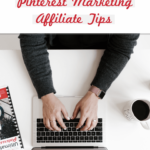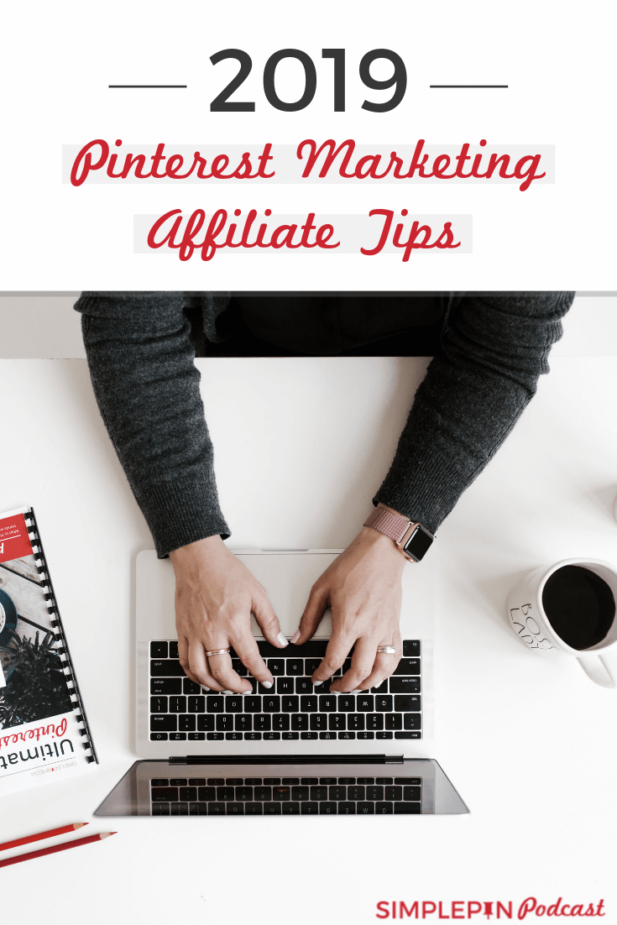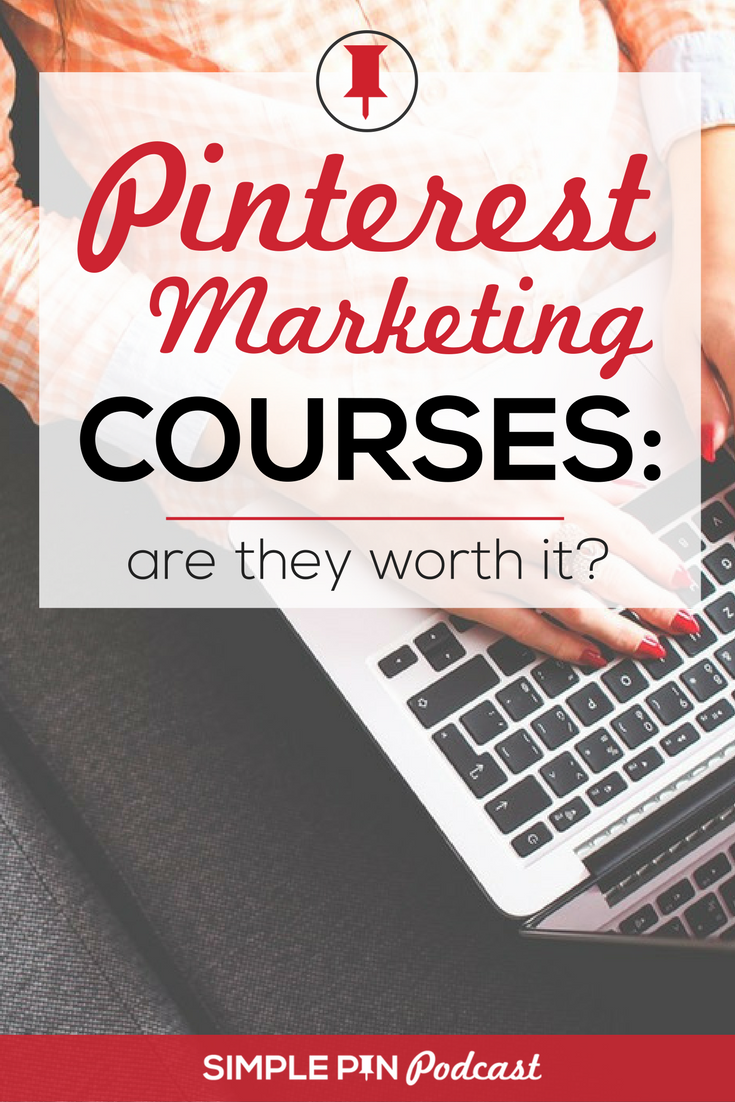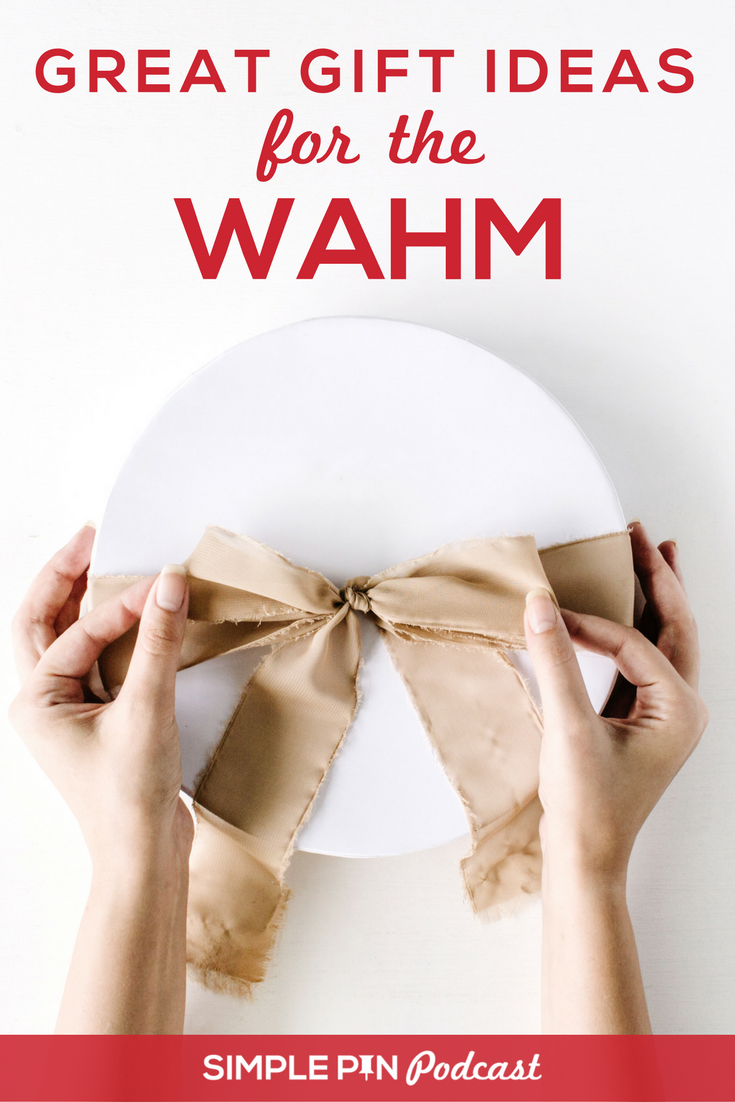Affiliate marketing can be a powerful tool in your Pinterest strategy, but it has to be done the right way. Today we’re zeroing in on Pinterest affiliate marketing tips for 2019. We talk about how to market the products your people will buy in a way that makes them want to click through.
Tasha Agruso is on the podcast with me today. Tasha was a lawyer prior to starting her blog –originally Designer Trapped in a Lawyer’s Body and recently rebranded as Kaleidoscope Living.
Her blog centers around DIY projects and home decor. Her mission is to inspire people to live their best lives, and she believes that starts with loving their homes.
Pinterest Affiliate Marketing Tips for 2019
Authenticity is Key for Pinterest Affiliate Marketing
Affiliate marketing is when you use an affiliate link on your blog and earn a commission if someone clicks on your link and makes a purchase. It’s important to understand that the commission comes out of the company’s pocket, and not the reader’s pocket.
Tasha strongly believes that authenticity is the key to successfully incorporate affiliate marketing into your business. She shares links to items that she is personally using in her home, as well as items that get great reviews and/or are a good value.
She also creates round-up posts of items she discovers while searching for something specific. For example, if she was searching for a twin bed and found one she loves, she will share 14 beds that she discovered while searching, as well as the one she ended up purchasing.
It would be easy to just plan your content around what’s trending at the moment. However, it’s more important to serve your audience and meet their specific needs. After you build up that know, love, and trust factor with your audience over time, they’ll actually WANT to purchase through your affiliate links, and will make an extra effort to do so.
Pinterest Referral Traffic
Pinterest has been a great traffic-generating platform for Tasha. Users find exactly what they are searching for on her site – DIY home improvement projects. About 50% of Tasha’s traffic comes from Pinterest.
Pinterest has always and will continue to be Tasha’s most important social platform. She is in a very visual niche, which matches up perfectly with a visual marketing platform like Pinterest.
Although Tasha’s site traffic peaked in 2016 and has gone down since then, her income has continued to increase. It’s so important to remember that you can only chase traffic for so long before you focus on optimizing the traffic that you have.
If your traffic is down this month don’t stress over it. You always need to be focused on ROI.
Creating “Life” for Your Affiliate Marketing Pins
If you just have a Pinterest board full of product pins without posts on how you’ve used the products or benefitted from them, your audience isn’t going to be interested. That’s why the authenticity is such a vital component of any successful affiliate marketing strategy.
If you aren’t sharing authentically, your audience has no reason to be interested.
Disclosing Affiliate Links
One of the questions we field quite a bit is whether or not you need to use hashtags to indicate that a post contains affiliate links. You can use hashtags to do so, or just put (affiliate link) at the end of your description.
Either way, you just need to let the user know that you are using affiliate links in the post.
Where Should I Link To?
Instead of linking your pins to direct affiliate links, think about what kind of content you can create to serve your audience, then find affiliate links that work with that content.
Tasha always links to Amazon if an item available on Amazon. Amazon is the affiliate program that converts the best for affiliate links. She avoids linking to retailers that have a brick and mortar store link (like Home Depot), since readers will typically just grab what they want the next time they are in the store.
Reward Style is another affiliate program that Tasha highly recommends. Once accepted, this program enables you to link to thousands of retailers within their network.
Another great tip from Tasha — be careful about linking to affiliates that are less well-known. People are naturally distrustful of unfamiliar online sites, and therefore less likely to purchase from them. You want to do everything you can to ensure your audience feels comfortable purchasing from your link.
Creating Images for Your Affiliate Links
When Tasha is creating images for her posts that contain affiliate links, she typically creates collage-style pins for Pinterest.
She doesn’t just grab an image from Amazon. She suggest that you design pinterest images the same as you would create for any other type of post, making sure they grab the pinner’s attention.
If you are trying to link to Etsy from your blog and want to use a product photo from the website, you can always just email the seller and ask permission to use the product photo. Most of the time, they will appreciate the free advertising.
Make Your Affiliate Links Stand Out
Tasha likes to remind people that if your affiliate links are not easy to find inside your blog post, no one will find them and click on them. Step into the mind of your reader, and remember that a lot of them will be on their phones. You need to be strategic and about how you format your posts and where you place those links.
Take some time and read some of your posts on mobile and see how clear your links are. It’s okay to make a bold “CLICK HERE” statement next to your affiliate links. Your reader won’t feel attacked.
The biggest thing to remember is this:
You’re not being pushy, you’re being helpful. — Tasha
If you are interested in learning more about affiliate marketing, go join the wait list for Tasha’s affiliate marketing course.
For Further Reading/Listening:
- How To Create a Pinterest Marketing Strategy That Works For You
- Affiliate Marketing and Pinterest: Tips and Strategies for Success
- Converting Pinterest Traffic to Sales
- Pinterest KPI’s: How to Measure Your Success
Time Stamp:
3:48 – Intro
13:08 – Authentic Affiliate Marketing
25:06 – Traffic From Pinterest
33:57 – Creating Life for Your Affiliate Marketing
36:33 – Do I Use Hashtags to Let The User Know?
41:25 – Where Should I Link To?
53:14 – Creating Images for Your Affiliate Links
56:40 – Make Your Affiliate Links Noticeable










Great info! Thank you. My impression from Amazon is that we can’t use their images to create a collage type blog post image/pin. We’re only supposed to use them to link directly to the product. Is there a loop hole I don’t know about?
No loophole except getting permission from the product manufacturer and/or photographer.
Kate, thanks for your great interviews! I’m not a lawyer, but you might want to put a disclaimer by “just put (affiliate link) at the end of your description.” I believe this fails FTC requirements 2 ways: 1, the FTC has said “affiliate” is unclear to the normal person and isn’t acceptable as disclosure. 2, the end of the pin description is rarely seen so this position would probably be unacceptable.
Yeah, this is such a grey area for wording but I appreciate this call out.
Hi Kate! Loved this podcast episode. You mentioned there’s a way to track which blog post is driving your amazon affiliate sales, any chance there’s a tutorial anywhere? I’ve been trying to figure out how to do this and can’t find anything on the affiliate help site. TIA!!
You can create separate tracking IDs in Amazon. It’s very easy and then when you grab your URL, just make sure it’s assigned to the right ID for that post. I just started doing this and it’s working great! So much more insightful data.
I wonder if she was talking about UTM codes?
Not UTM’s, you can create seperate links in Amazon. I’ll see if I can do a quick video tutorial within the next month and post here.
Thanks for lovely article share, This article is very good
Thanks for the blog post! Question for you. Say I want to link to an item on Athleta, for example. Can I use their images or how would you do that?? Thanks!
Hey Julie, It’s up to the brand and their affiliate program. You would need to read their Terms of Service.
Pinterest is an incredible tool, yet little explored by affiliates in the digital marketin. It is worth investing time on that platform. 🙂
Interesting post. I’m glad I found this page. I’m going to bookmart it so I can read any future posts.
Happy to hear you found value in the content!